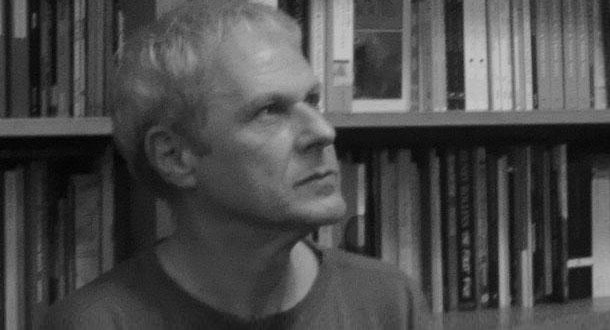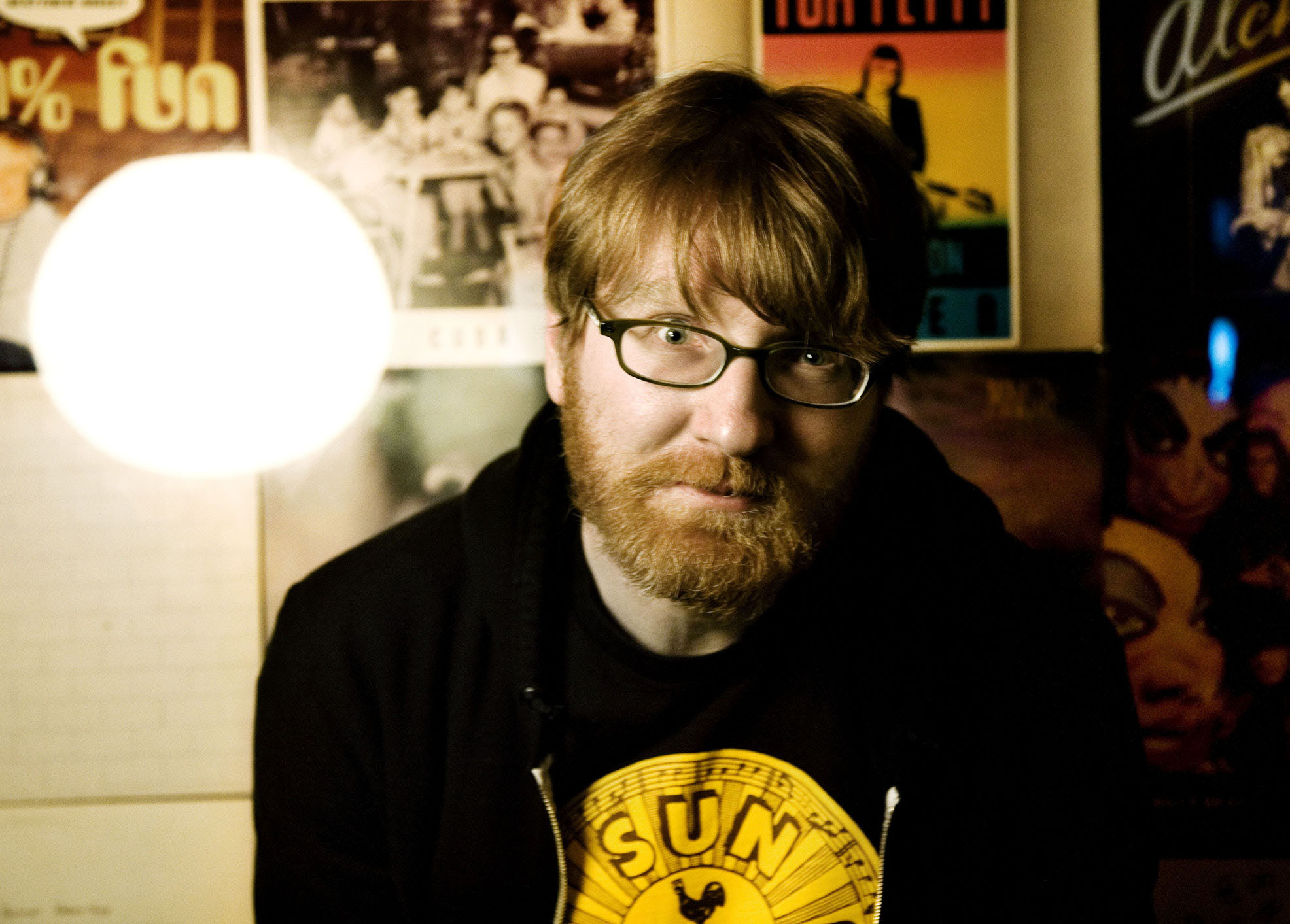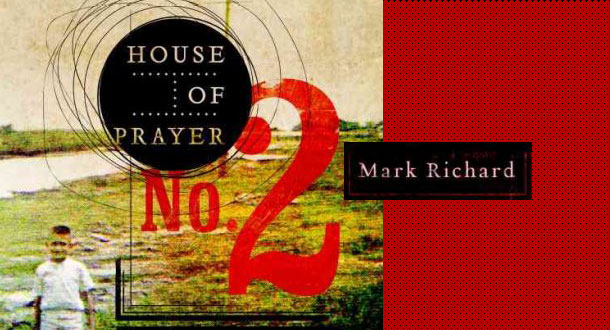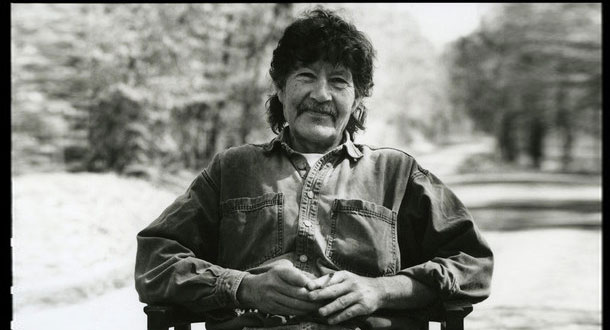Andy Davidson came out of nowhere earlier this year with his debut novel, In the Valley of the Sun, a Southern noir masterpiece about serial killers, vampires, and West Texas. It quickly shot to my favorite book of 2017 and I doubt anything else released this year is going to change that. Davidson was kind enough to take a break from an extensive book tour to answer some questions for us.
I don’t know much about you, Andy, and there’s not much information already available online, so let’s start from the beginning: Who are you and where the hell did you come from?
I’m originally from a small town in south Arkansas. I had maybe fifty people in my high school class. I went to college in another small town about fifty miles from home, graduated in 2000 with an English degree and a minor in communications. After that, in 2001, I left Arkansas for graduate school in Mississippi. I spent a few years getting my MFA at Ole Miss, taught online for a while, then moved to Georgia in 2007 to take a job teaching college English. I found my soul mate there, and I’ve been living in Georgia ever since. I’m 38 years old. My favorite movie is Jaws.
None of that tells you who I am, I guess. I like to think of myself as a nice guy, but that’s how most people describe serial murderers on the local news, so that probably doesn’t tell you much either. I do get asked quite a lot: Why does a nice guy like you write about such horrible things? Which is probably a question most writers in the horror genre get, because most horror writers I’ve met are such incredibly nice people. Maybe the answer to that question would answer yours, but I’m never sure what to say. Seems like there’s some clue to who I am in there. Horrible things are always with us, and most nice people spend their lives avoiding them, whenever possible. I certainly do. Maybe horror speaks to the fear nice folks have of terrible things punching through and invading our quiet, “normal” lives. Maybe I find some catharsis in writing about those things? Or maybe I just like vampires and werewolves and stories about people trying to be good when the odds are stacked against them.
Since I realize that’s a kind of strange answer, here are a few more fun facts about me and my wife, Crystal: we have five cats and live in a smallish house and buy books like unapologetic assholes. Every six months, we have to buy new bookshelves. Pretty soon, we’ll have to buy a new house. In a bigger town, maybe. Also, I lied a little: we really have eight cats (five live inside, three outside).
What was your childhood like? Was your family a “book” family or did you discover reading elsewhere?
I had a great childhood.
Mom was an elementary-school teacher, and Dad taught high school English until I came along. Not long after I was born, he took a principal’s job in a little Delta town in east Arkansas, not far from West Memphis. We spent a few years there, then moved back south, where I spent the next nine years being a teacher’s kid.
My parents are the sweetest people in the world, and they taught me early on not only to love books but also to love reading them for pleasure. I was in the fourth grade when Mom told me about Watchers by Dean Koontz, then Dean R. Koontz (back when he still had hair in his photos). It was the first adult book I ever read, and man, did it hook me. It was a gateway to Stephen King, a habit my Dad encouraged with IT. When I was in high school, we lived on a small lake near a state park, and I remember sitting on our screened-in porch in the dead heat of August reading King’s uncut Stand for the first time. That scene with Trashcan Man and the Kid? Scared the bejesus out of me!
One thing my parents loved to do that I didn’t was fish. They’d take my grandmother out to the lake or a reservoir somewhere in Louisiana and stand on a pier in the hot sun with her for hours, cane poles in the water. Me, I sat in the car and read comic books I’d bought at the bait store, things like The Punisher, Batman, Conan the Barbarian. I loved Savage Sword of Conan, those black and white annuals. The gorier the better!
I spent a lot of time in the public library, too, especially in the summers. Checking out Hardy Boys mysteries when I was younger and later on John Gardner’s James Bond novels, which I read over and over, just like I watched the movies, which I’d rent two and three at a time from a local video store. Every now and then, I happen to see a copy of No Deals, Mr. Bond in a used bookstore and I get this intense pang of nostalgia. It brings back that smell of old books and the sound of plastic slip covers crackling, Dewey Decimal stickers on spines, crooked Courier font. Fantastic stuff.
So, yes, I guess it’s safe to say we were pretty bookish.
When and how did you start taking an interest in creative writing?
I can’t remember having an interest in writing prior to the age of ten, when two major seismic events happened in my life.
The first was this: my fifth grade teacher had us journal every morning. She’d give us ten, fifteen minutes to write, then ask us to read what we’d written. I never did, on account of being shy, but there was a guy who sat in front of me who’d read my stories and decided, one day, to snatch my notebook and get up and read them for me. I guess he figured they were good enough they deserved to be heard, which is pretty altruistic and forward-thinking for a fifth grader. Turned out, he sucked at reading out loud, which prompted me to get up and read it correctly. It was a story called “Willy the Worm.” Who knows why I settled on that. It may have had something to do with Beverly Cleary’s The Mouse and the Motorcycle. Willy wore a hat, drove a car, had all sorts of relationship problems with his new bride (I like to think I was anticipating the influence of Raymond Carver, as a future MFA). Anyway, I read for a little while and finished and looked up and the whole class was rapt, and that was my first taste of what it felt like to have an audience. Goofy as it sounds, I think it taught me the power that words command when put together just right.
The second major event was Tim Burton’s Batman. One day, in that same fifth grade class, a kid named Billy Dowling leaned over and whispered to me, apropos of nothing, that Michael Keaton was going to play Batman in a new movie, and I called him a liar right there on the spot. Mr. Mom play Batman? No way! Later that week, I went home and turned on the TV and there he was, crashing through a skylight in a promo for the film, and I still remember how my heart just pounded over that image. In the run-up to the movie’s release, I read every comic book I could get my hands on, including Frank Miller’s The Dark Knight Returns. For Christmas, the year I was ten, my parents bought me the leather-bound edition, and I carried that book around like a new Christian might carry a Bible. It was transgressive, that narrative, disruptive to everything that had come before, and it left me dizzy every time I read it. I even read Bob Kane’s autobiography, Batman and Me. This was all significant because it fired my imagination. I started drawing comics of my own, some with Batman and the Joker, others with characters I’d made up. I read about the creative process of moviemaking, got my first taste of what it meant to other people to tell stories. I felt their value in a palpable way. Burton’s movie was a near religious experience (and it still holds up, if you ask me, has a timeless quality to it). Anyway, I must have seen it three, four times in theaters, which for a kid who lived in rural Arkansas was not insignificant. I read the novelization of the screenplay. Learned about deleted scenes and model-making and costuming and set-design. Began to think of movies not just as things to watch but things to build. I made videos with action figures. In short, Batman triggered my creative awakening. After 1989, I never went anywhere without a notebook.
Was In the Valley of the Sun your first attempt at a novel, or are there several other half-finished books buried deep in your backyard? Tell us a little bit about your journey from Batman enthusiast to kickass novelist.
In the Valley of the Sun is the first novel I ever finished successfully. But there were others.
When I was a junior in college, I wrote a 360-page manuscript as an honors thesis. It wasn’t buried in the backyard, but I did find a hard copy of it almost twenty years later in my Dad’s shed, come to think of it. That was a good laugh. It’s fun finding your old crap. It’s illuminating. You see bits and pieces of your style trying to emerge, like seeing those parts of yourself in childhood photographs that are still there every time you look in the mirror as a grown-up. My professors’ comments were there, too. One questioned my assertion that a “flatulent dog is somehow more amiable.”
It’s neat, I guess, to be reminded that you were committed to this idea of being a writer, even when you were still this half-formed individual without any life experience. Plus, writing that book helped me meet a few professionals, one of whom was kind enough to tell me about the MFA, how it would benefit me, creatively (or maybe it was just her way of telling me I needed to learn how to write). Either way, it put me on the right path.
But paths don’t always lead where you expect. I spent three years in an MFA program and never finished anything longer than a short story. In the end, twelve of these made a collection that got me a degree, but I had been trained to write as a literary writer, not a genre writer, and I’ve never had any ambitions to be thought of as “important” in the way literary writers are often regarded. After I got out of my program, I didn’t write for a long time. At that point, I had started two or three novels that never made it past the 10,000-word mark. There was just nothing compelling me to write. And when I did dabble at stories, it was just dabbling. I lacked maturity, I think, but I also lacked something to say and a way to say it.
The only other thing I finished before In the Valley of the Sun was a novella about a girl who turns into a werewolf. I self-published it, and even now, when I look back at it, I cringe at how undisciplined it feels.
What sparked the original idea for In the Valley of the Sun? What was your process like during the book's creation?
In 2010, my wife and I had a privacy fence installed around our lot. That summer, I had to paint the damn thing, which meant lots of time standing around painting and thinking. So I listened to music most days, and one afternoon Dwight Yoakham’s cover of “Honkytonk Man” shuffled through. The opening lines of that song sparked an idea: What if a cowboy picked up girls at honky-tonks all over Texas and murdered them? I married this idea to Horton Foote’s screenplay for Tender Mercies and had the spine of the story, which I wrote as a script. Which I then turned into a 40,000-word novelization. Which I then realized was missing something—something key. I happened to be re-reading Salem’s Lot at the same time I was revising the book, and suddenly I hit on it: the supernatural. Some greater horror than Travis. A female vampire, maybe, who turned the tables on her would-be attacker. That was really cool, I thought. So I re-envisioned it from the ground up and gave it some teeth.
 Did you always intend on splitting the POVs? The cast of characters here seem to multiply quite a bit as the story progresses. The reader is blessed with some terrific, engrossing backstory for each one, too. How did you go about developing these people's lives so thoroughly?
Did you always intend on splitting the POVs? The cast of characters here seem to multiply quite a bit as the story progresses. The reader is blessed with some terrific, engrossing backstory for each one, too. How did you go about developing these people's lives so thoroughly?
A lot of the character development is owed to my editor, who pushed me to deepen the backstories of Rue and Travis. Annabelle and Sandy were almost always there from the beginning, but the others grew as I revised. As for the points-of-view, yes, I always wanted to tell the story from multiple characters’ perspectives, because I think multiple POVs make for better drama. If the reader knows, for example, that Travis is a killer of women, and then we cut to Annabelle’s POV as she confronts him for the first time, two things happen: 1.) the reader sees Travis through a fresh set of eyes and sees another side of him, a gentler, more appealing side, and so he’s humanized, and 2.) the reader knows he’s a killer and fears for Annabelle, so her limited perspective plays up the dramatic irony at work. When I first envision characters, it’s from the outside in. I see them with a cinematic eye, i.e. I know what they look like. I know what they do, too, but I don’t why they do it. Later, in the revision process, they tell me why, and so adopting their POVs is partly an act of crawling into their skin in order to see them from the inside out.
I was reading this at a diner in California, and the server asked me what it was about. I got about halfway through the sentence, "Well, a serial killer gets turned into a vampire and starts working at a motel," before she turned around and helped another customer. How would you describe this book without scaring people away?
I probably wouldn’t use the word “vampire.” Unfortunately, it’s not a popular trope among mainstream readers anymore. Which is not to say there aren’t great vampire books out there (Christopher Buehlman’s The Lesser Dead springs to mind). But I’ve had very nice elderly ladies tell me, after hearing me read publicly from the book, that they probably won’t read the book because they “don’t do vampires.” That’s unfortunate (but also very funny). So I consciously avoid using the word, even in the book itself, and the marketing has eschewed it, too, mostly. I’m convinced using it in my query letter got me rejected by a number of agencies, even though they claimed they were interested in horror. To answer your question: I’d probably tell people it’s a book about what happens when evil walks into your life in the guise of everything you’ve ever wanted.
How much research went into investigating serial killers? You seem to know your stuff. The agents assigned to the case feel very real and I wouldn't mind reading other stories with them involved.
I did some initial research to make sure I wasn’t coloring too far outside the lines, but the thing I kept finding was how there aren’t really any hard rules that govern what serial killers are capable of. You can pretty much assign any reason for why they do what they do and you’re in the clear. In the end, I tried to give Travis a believable psychological make-up, but I didn’t want to think of him as a textbook serial killer. To me—and this gets back to your question about POV—I just wanted to see the world through his eyes and, in doing so, wanted to urge the reader to care about him, not hate him.
What's the best serial killer story? The best vampire story? Or are they the same thing?
Well, vampires are serial killers, aren’t they? They tend to stalk their victims. They certainly have their M.O.s. Probably kill similar types of people, just like we tend to order our favorite meals at our favorite restaurants. But for straight-up textbook serial killer stories, I don’t think you can beat Manhunter, Michael Mann’s adaptation of Red Dragon by Thomas Harris. As for vampire stories, well, I’m not sure there is a best one. I’d have to give the boring answer and say Dracula, of course, then correct myself and say no, no, Stephen King’s “The Night Flier,” then turn around and say, whoah, wait, I forgot about The Hunger. Maybe the best vampire story, in the end, is the one that scares the hell out of you. In Salem’s Lot, there’s a scene in which a gravedigger becomes convinced the child inside the coffin he’s shoveling dirt over wants him to open the lid. And all the while he’s resisting, the sun is setting. That terrifies me, for some reason I can’t explain. Vampires need to be scary. And if it scares you, it’s good.
What's next for you? Any new projects you can talk about?
I’m finishing up a novel that’s a weird, Southern Gothic thing, featuring an orphan girl who’s entangled with a mad preacher and a swamp witch and a fish-boy. After that, I’ve got a third novel on the back-burner for now. I’m billing it as Smokey and the Bandit meets Bram Stoker’s Dracula. We’ll see.
Earlier you mentioned Jaws was your favorite movie. Did you see the showings Alamo Drafthouse sponsored recently? Float out in a lake on a tube and watch it on the big screen. Sounds terrifying, but a lot of fun. If you were given unlimited freedom and money, how would you show a hypothetical film adaptation of In the Valley of the Sun?
I read about that screening. I was delighted by the fact that they actually hired scuba divers to swim beneath people and yank their feet. The work the Alamo folks do to advance the love of movies is phenomenal. As for In the Valley of the Sun, I recently drove past a magnificent old west-Texas drive-in somewhere between Lubbock and a town called Muleshoe. It wouldn’t be all that expensive, I guess, but it sure would feel right. Maybe at some key point in the film, some strategically placed sonic device, a la Batman: Year One, could lure a swarm of bats to descend upon the unsuspecting patrons? I don’t know. There’s probably a lawsuit waiting to happen there.
Since we're already on the subject, who would you cast in a film adaptation of your novel? Ideal director? What song's playing in the trailer?
The song’s easy. I made a playlist of about thirteen or fourteen tunes that not only evoke the novel’s themes and characters but actually featured in early drafts. Chief among them was “My Heart Cries For You” by Jimmy Wakeley. This is actually the song Travis hears when he drops a quarter in the jukebox in the novel’s prologue. Of course, all of these had to go, as I couldn’t afford them. But as for an actor who might play Travis, I’m convinced the best way to go would be to cast someone unknown. Travis, after all, has a certain anonymity as a character. He’s a stray, a ghost. Casting a big name or even a known face in that part might disrupt that sense of mystery. The director’s almost as easy as the song. I’m a huge fan of Jeff Nichols, who directed Take Shelter, Mud, and Midnight Special. I’d be delighted to see him take a crack at it. Of course, that’s if the Coen Brothers aren’t free.

About the author
Max Booth III is the CEO of Ghoulish Books, the host of the GHOULISH and Dog Ears podcasts, the co-founder of the Ghoulish Book Festival, and the author of several spooky books, including Abnormal Statistics, Maggots Screaming!, Touch the Night, and others. He wrote both the novella and film versions of We Need to Do Something, which was released by IFC Midnight in 2021 and can currently be streamed on Hulu. He was raised in Northwest Indiana and now lives in San Antonio.
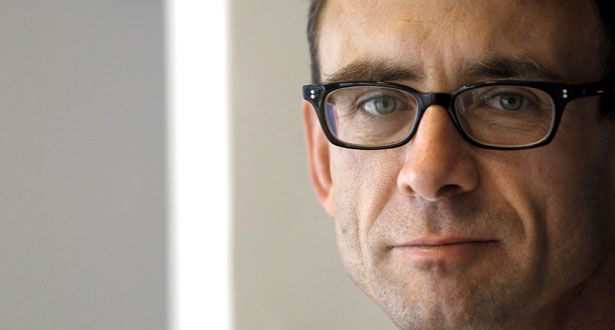
.jpg)
